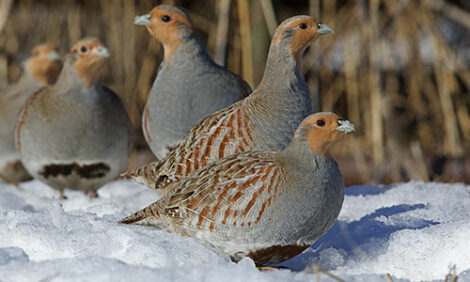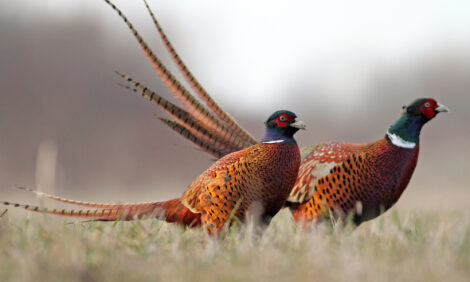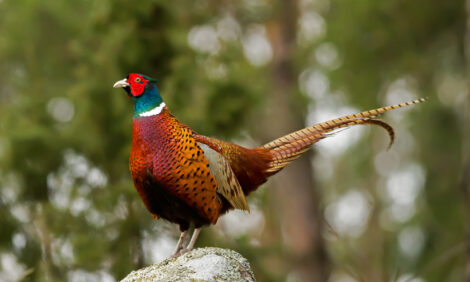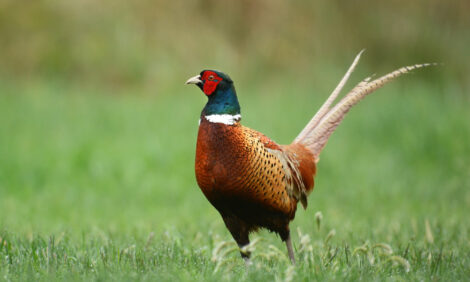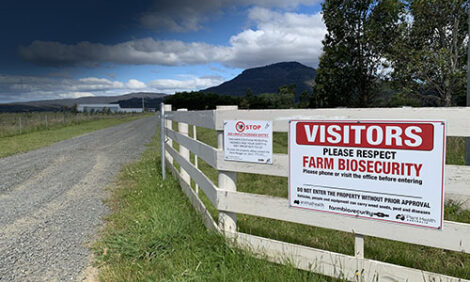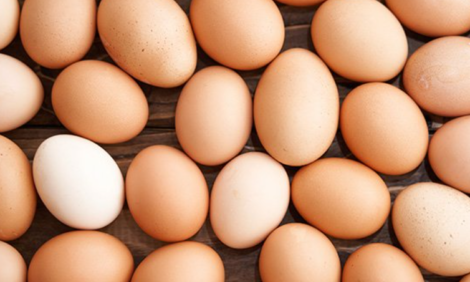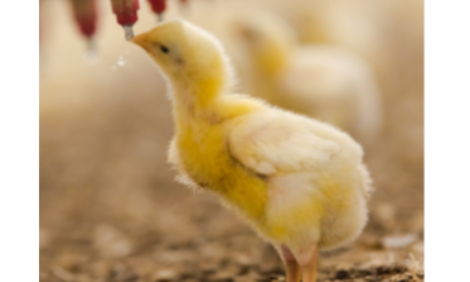



US Poultry Industry Manual - turkey biosecurity
Building a biosecurity plan for your farmPart of Series:
< Previous Article in Series Next Article in Series >
Editor's Note: The following content is an excerpt from Poultry Industry Manual: The Foreign Animal Disease Preparedness and Response Plan (FAD PReP)/National Animal Health Emergency Management System (NAHEMS) Guidelines which is designed to provide a framework for dealing with an animal health emergency in the United States. Additional content from the manual will be provided as an article series.
Biosecurity is the preventative measures taken to reduce the risk of infectious diseases being introduced into an animal population. When biosecurity is not implemented, or when there is a lapse in biosecurity, a susceptible host or population may be exposed to infectious organisms. Some infectious diseases may be detrimental to the health and well-being of the animals, or present a food safety risk. Diseases that are reportable by state and/or federal governments can have a broader impact; possibly affecting trade, movement of birds and product, or require an organized response to contain the disease. Therefore, procedures are put into place in turkey flocks to either exclude known risk factors or minimize risk when it is unavoidable.
Biosecurity Plan
A biosecurity plan provides instructions on how to mitigate biosecurity risks for everyone within a company or site. Development of specific procedures in the plan is based on risk assessment; evaluating frequency, likelihood, impact, and controllability of certain biosecurity risks. Documented biosecurity procedures within the plan should be practical, clear, and effective. Most biosecurity procedures have an associated cost, so a cost/benefit analysis is usually performed before implementation. Biosecurity plans frequently change based on new information, monitoring of existing procedures, or changing biosecurity risk factors. Compliance, a critical aspect of a biosecurity plan, is improved by using checklists; sign-off sheets, incentives for good compliance, and/or disincentives for poor compliance.
Biosecurity plans are structured in many different ways. One method of developing a biosecurity plan is based on three steps−conceptual, structural, and operational biosecurity. Conceptual biosecurity involves evaluating the potential location of new poultry operations including regional density, proximity to other poultry/animal facilities, flyways, prevailing winds, potential for flooding or other adverse weather events, and movement of poultry in the region. Structural biosecurity involves fixed cost elements of the facility including layout and design such as impervious surfaces, adequate drainage, perimeter fencing, changing/employee space, shower facilities, and vehicle wash stations. Operational biosecurity involves the routine operations and specific farm practices such as rodent, insect, and wild animal control, limiting access of people to the farm, requiring personal protective equipment, cleaning and disinfection, litter management, and disease surveillance.
Pests, Wild Birds, and Other Animals
Procedures need to be in place to control rodents, insects, and other animals that may transmit infectious diseases to a turkey flock. Bait stations are used to control rodents and insects. It is important that bait is not accessible to the turkeys. When used, rodent bait stations are routinely checked and rebaited when needed, and placed properly along the edge of a wall where rodents typically run. Bait stations are most effective in preventing disease transmission when used on the exterior of buildings and clearing vegetation around the house by at least 18 in (0.5 m) is useful for preventing rodents. Housing should be checked for areas where wild birds or other animals could enter the flock and holes should be patched if needed. Placing feed bins on cement slabs and removing any spilled feed deters rodents and wild birds that may be attracted to the feed. Allowing pets on farms, even if they are used for rodent control, is considered a poor practice as they can become infected with diseases carried by rodents and transmit them to the turkeys. Similarly, permitting pets to scavenge dead birds may result in their becoming carriers and spreading an infectious agent to other flocks on the farm or nearby farms.
People
Several procedures are useful in minimizing the risk of people introducing infectious diseases into turkey flocks. Employees should have clean clothes. Clean cloth or disposable coveralls and hair covering is recommended. Some facilities may have a liquid or dry bleach footbath that should be clean and utilized if it is to be effective. A footbath station may include a cover, scrub brush, and/or cement slab to minimize organic contamination. Gloves and/or ability for employees to clean their hands (sanitizer or sink) are recommended. Especially with breeders, facilities may include shower-in/shower-out facilities where all people are required to at least shower in and put on clean clothes prior to entering the farm. Employees travelling to multiple farms each day need to consider age and health status of the flocks when determining the order of farm visits. Employees must avoid all other avian contact, especially other poultry and wild waterfowl. A logbook for all people entering the farm helps to ensure that they meet requirements for not having been in contact with other poultry within a specified time. Accurate logbooks can be useful in determining what farms need to be quarantined in the event of a disease outbreak. Visitors, especially if they enter the flocks, should be minimized. Clearly visible signs warning away visitors need to be posted at all entries. Locks and fences are also useful in preventing unwanted visitors from entering the farm or houses.

Cleaning and Disinfection of Facilities, Equipment, and Vehicles
Equipment is cleaned and disinfected prior to being brought onto a farm or moved between flocks. Also, the house is cleaned or cleaned and disinfected between flocks as indicated. Vehicle access to farms may be restricted, or allowed with guidelines, e.g., restrictions on distance from the farm and cleaning and disinfection. When cleaning surfaces, vehicles, and equipment it is important to remove organic material first before disinfection, as most disinfectants do not work well in the presence of organic material. Important properties of the disinfectant should be known such as range of activity, contact time required, corrosiveness, and human health implications.
Plans for disposing of carcasses and litter need to be in place and followed. Methods of disposal include spreading litter on fields, composting, incineration, burial, or rendering of carcasses (see 5.1). Not all of these options may be available, based on state and local regulations and proximity to ground water sources. Rendering and litter trucks present a significant biosecurity risk when moving among farms and appropriate precautions need to be taken.
Surveillance
Surveillance for disease is an important part of any biosecurity plan because it helps to assess the effectiveness of the biosecurity procedures and permits an infectious disease to be isolated to a single house or farm. Surveillance can include evaluating farm data records, testing birds serologically, fecal floatations, environmental sampling for microorganisms, and necropsy of mortality. Data records that include basic flock information (source, numbers placed), mortality, production parameters, feed deliveries and consumption, service technician reports, and water consumption need to be kept for each flock and consulted if there is a health problem. Changes in any parameter can indicate onset of disease. Although mortality may be necropsied periodically to evaluate the flock, a spike in mortality warrants a disease investigation and possible submission of birds to a diagnostic laboratory.
Reference: "USDA APHIS | FAD Prep Industry Manuals". Aphis.Usda.Gov. 2013. https://www.aphis.usda.gov/aph...
The manual was produced by the Center for Food Security and Public Health, Iowa State University of Science and Technology, College of Veterinary Medicine, in collaboration with the USDA Animal and Plant Health Inspection Service through a cooperative agreement.









